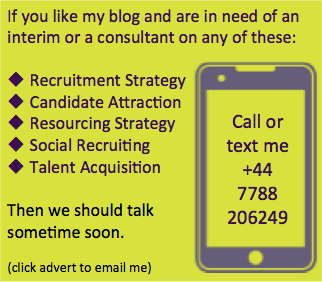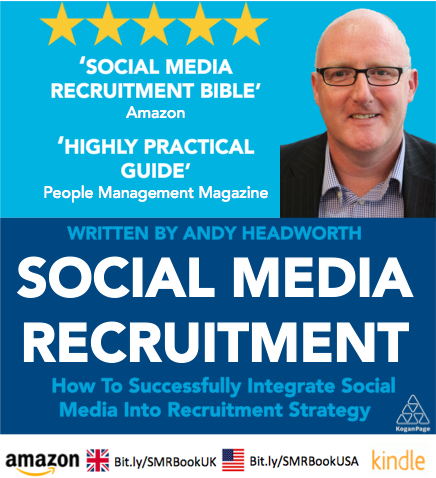What To Do If Your Social Media Content Is Not Being Read
What is the impact on your social media talent acquisition and engagement if no-one is reading the content that you are sharing on your chosen social media platforms? If you are either creating or curating the wrong types of content to an audience that isn’t interested, then you are in trouble if that is part of your strategy.
This is something I regularly see when initially reviewing social media activities of new clients I start working with. They are doing the correct things like writing content on their blog and they post content on Twitter, Facebook and LinkedIn, but they wonder why no-one is engaging with them or sharing their posts. They also see no increases in their follower / like numbers which is actually the usual trigger for many of the complaints.
So to look at this issue, I just want you to take a step back from the company stuff for a moment and think about yourself:
- What do you like reading in your social streams?
- What gets your attention? What makes you click on content?
- Why do you share things you see on social media with your networks?
- Why do you skip past certain content in your feed?
- What makes you click on the content poster’s profile and follow them?
Now take a look at the last months content you have written or shared on your social media platforms and apply your ‘criteria’ to it. I bet you see it a little differently now, don’t you?
When you are creating and curating content with a specific objective in mind (you have set objectives for your social media activities haven’t you?) you have to put yourself in the eyes of the person reading it. You have to try and understand their interests and motivations for wanting to read your content. Obviously this is a learning exercise through calculated testing of your content, and it is never an exact science, but if you have done your homework correctly identifying and defining your target audience then that is a good start. Actually, if you haven’t taken the time to understand your target audience then you might as well be posting your content on Mars for all the good it is doing!
So, you know your target audience - what their keywords, titles, synonyms and industry buzzwords are, which social networks they are on, what they share, what they like and you have set your objectives.
You now focus your content on making sure they meet these three criteria:
And you share it at the right times on the correct social networks such as these:
Now you may notice difference and you are getting some activity around your content - but it isn’t as much as you expected. What now?
I will let a client of mine answer this question because it is not an uncommon response I get when I challenge companies regarding this issue.
“It is an excellent article and it is posted on our blog. People will see it when they come to our career site because there is a link on the page.”
This is a version of the classic ‘if you build it they will come’ approach that just doesn’t work anymore online. Very simply it doesn’t matter how awesome your content is, if people don’t see it then they can’t like it, comment on it and (importantly) share it with their own networks.
So here are eight things you can do to ensure your content gets more clicks, reads, likes and shares:
- Make sure your blog / website has all the main social network sharing buttons on it - LinkedIn, Facebook, Twitter, Google+, Email share and a Pinterest PinIt button. Make it easy for people to share your content.
- Schedule your content to be posted at different times including while people are on the way to work/on the way home from work, and at weekends.
- Share your content multiple times on different days on the different networks - just be sensible and not do it every 10 mins!
- Encourage your employees to share the content on their own personal social networks. If you have made it interesting, relevant and timely then they will feel happier to do so.
- Include the content in the newsletter you send out to your talent pool (a.k.a. applicant database).
- Include an image at the top of the article as sites like LinkedIn and Google+ pull the image across when they post the article. It makes the post have more meaning and interest, and makes it more appealing to the reader.
- Ensure the headline makes people want to read the article. The headline is so critical to whether the post gets clicked on take the time to get it right. Here is an excellent graphic from Hubspot that will help.
- If you make your headline ‘tweetable’ (i.e. less than 80 characters) then there is no need for people to abbreviate it when they want to share it on Twitter.
After you have posted the content and shared it, how do you find out where people are sharing it?
There are three ways I use to do this. The first is to use Mention.net, which is a superb social media monitoring tool. The bonus is that is takes boolean strings! It is a paid for product but they do have a free version which is more than enough for most people. I use it to track my name and my company name/URL/blog. What I like about it is that it send you notifications quickly when your criteria has been found anywhere online.
Here is an example of what it looks like.
In this screenshot, it shows the snippet where name has been mentioned in a blog post (middle column), and then Mention shows me the full text of that article (right column).
Another method to track Twitter - and you need to do this as Twitter doesn’t pick up shortened URL’s (bit.ly etc) - is to set a column up in your social media dashboard. I use Hootsuite and have created a boolean string search (“andy headworth” OR “sirona consulting” OR sironaconsulting OR sironasays OR “sirona says) that will pick up my name/blog or website links being shared on Twitter. You will see below the difference between amount of content that gets noticed because of my @andyheadworth mention column (left) and the search string (right).
The third method is to check your website analytics and check the traffic links to the individual blog post.
We all go a lot of trouble creating content and if you have taken the time to collaborate with employees at your company, even more so. So it makes absolute sense to do your very best to make sure that it is read by as many people as possible. If you are creating content rather than curating then there is a very useful checklist from the Content Marketing Institute for making sure you have everything done when creating your own content. It is a very helpful graphic.
If you have enjoyed this post then remember, it is not long now until my new book gets published. This is one of the subjects I cover in the book, looking at how companies can use recruitment content marketing to help with their employer branding. The early industry reviews have been fantastic, so grab it at the discounted price while you can.
Find out how you can get a copy of Social Media Recruitment – How To Successfully Integrate Social Media Into Your Recruitment Strategy click here for more detail.












Pingback: Sirona 7 Ways Social Media Can Help Build Your Talent Pipeline()